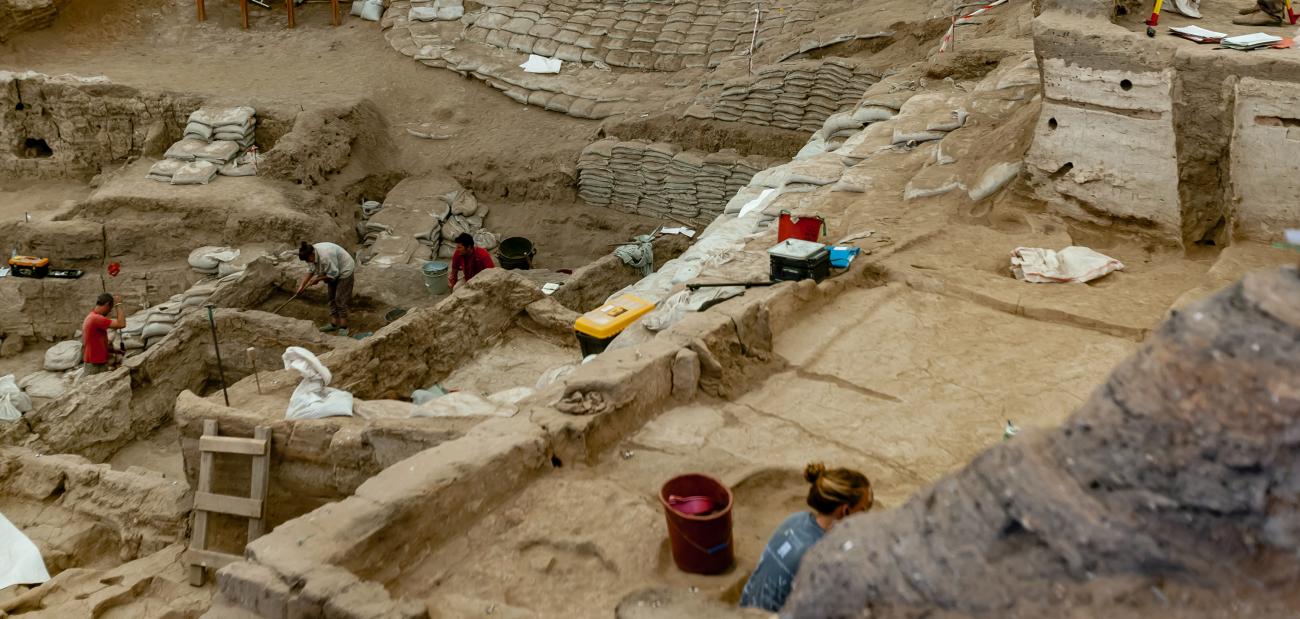
We were inspired by the beautiful drama following the unearthing of the Sutton Hoo ship burial, and its wealth of treasures, to look at five more astonishing archaeological discoveries around the world.
The Terracotta Warriors
The Terraccotta Warriors are rightly considered one of the wonders of the world, but the circumstances of their discovery are almost as incredible.
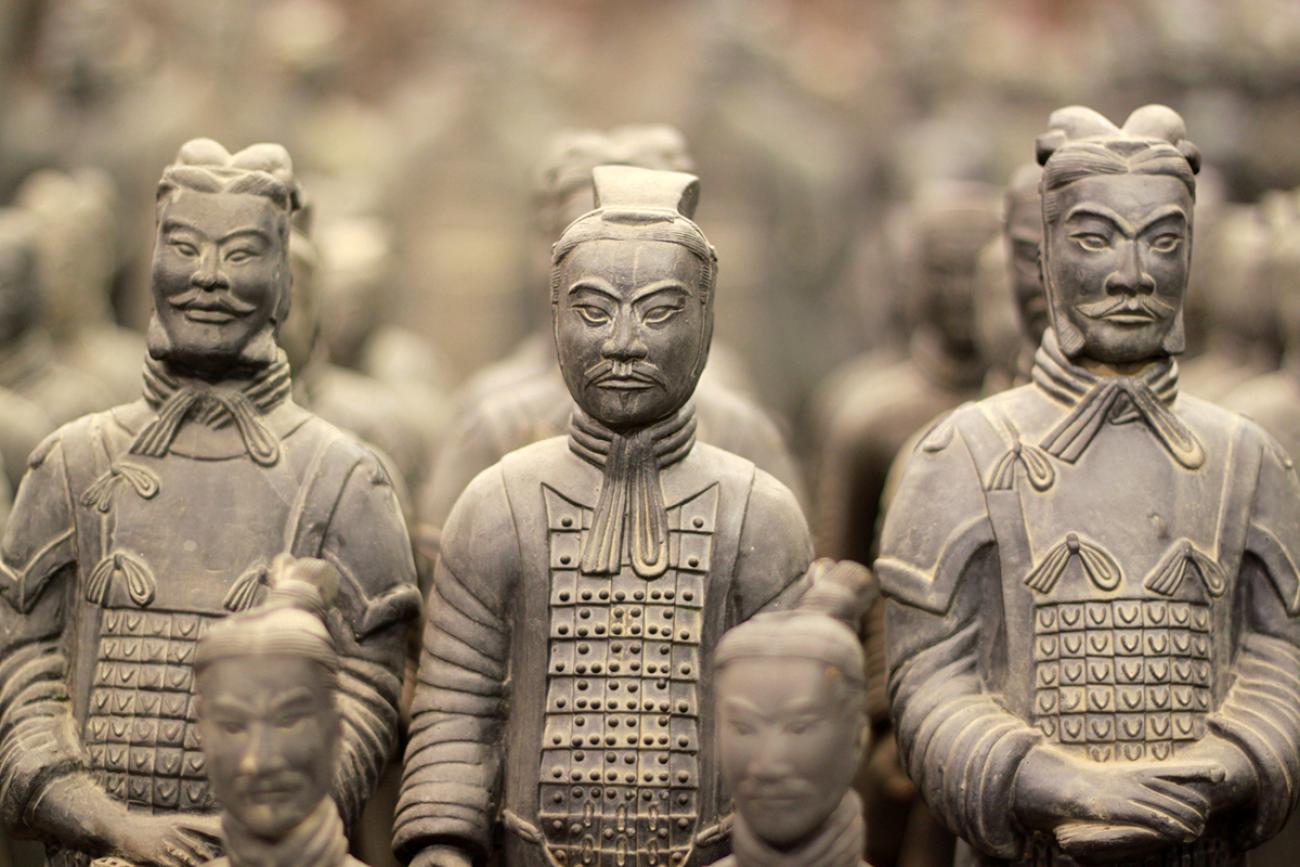
In 1974 a group of farmers digging a well during a severe drought struck something solid, and came across a collection of life-size pottery heads. Archaeologist Zhao Kangmin was called upon to investigate - a decade earlier he had personally uncovered three life-size crossbowmen, so he imagined this would be something similar. However the scale of the find left him astonished; an 8,000-strong life-size Terracotta army, complete with horses, chariots, armour and weaponry, to accompany China’s first Emperor Qin Shi Huang, in the afterlife.
Zhao Kangmin is something of a forgotten man, with the discovery largely being credited to the farmers, one of whom Yang Zhifa, would meet visitors and sign books at the Terracotta Museum in Xian. However it was Kangmin who ensured the Terracotta army was unearthed correctly and preserved for generations to come.
Today a visit to the Terracotta Army in Xian is one of travel’s most mind-blowing experiences, and even today only a fraction of what is believed to be buried has been unearthed.
Areni Wine Cave, Armenia
We all know that Georgia is the birthplace of wine…or do we? That theory was called into question by a discovery in an Armenian cave in 2010.
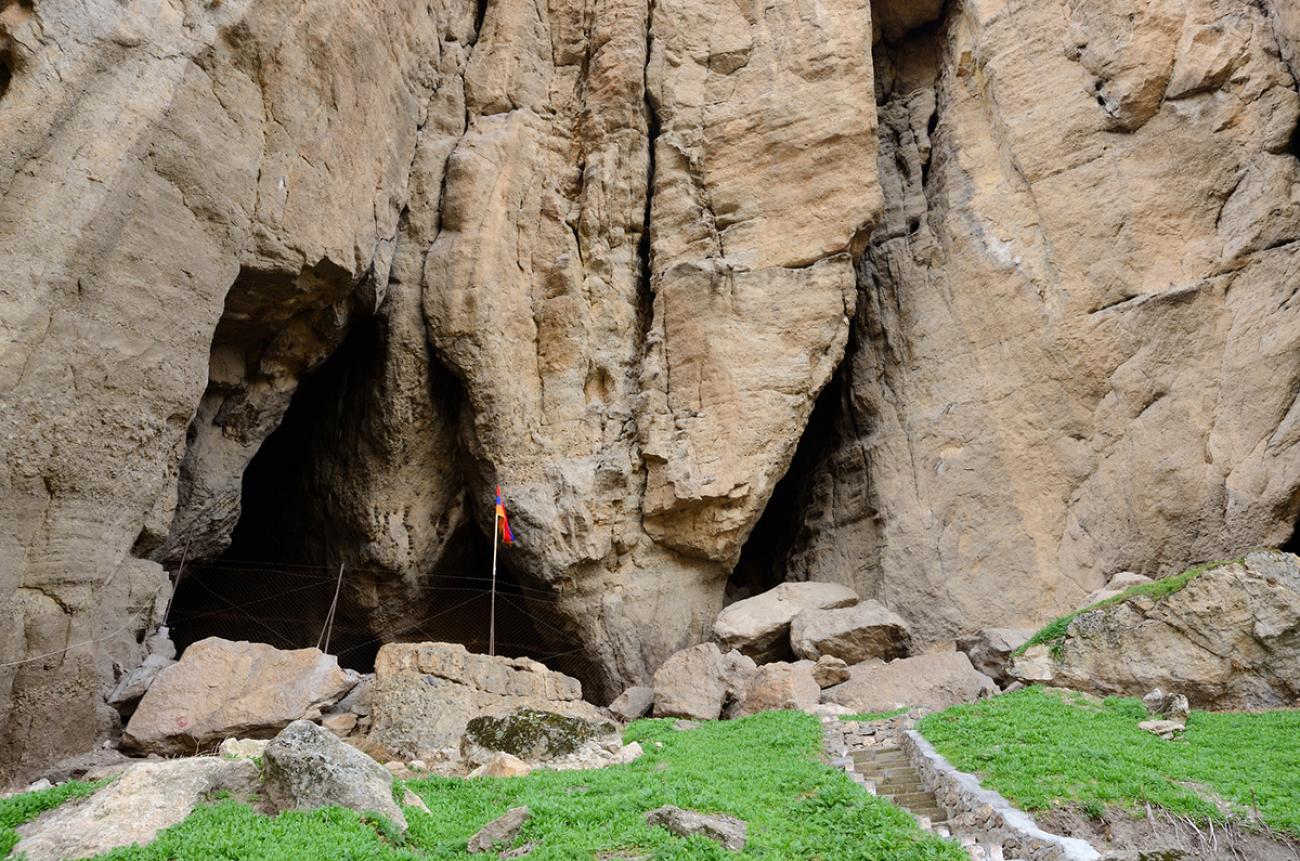
Archaeologists excavating a cave near the small village of Areni in central Armenia, came across a wine press for stomping grapes, fermentation and storage vessels, drinking cups and even millennia-old grape skins at the site. Chemical tests revealed traces of red wine, making the Areni cave the world’s oldest known winery at around 6,100 years old. What is interesting is that the ancient wine press showed the age old method of stomping grapes by feet was used, with the juice draining into a huge underground vat to ferment. The scale of the production facility indicates grapevines were domesticated in the region by then. Wine experts meanwhile believe the Areni grape would have produced a dry red, similar in taste to a Pinot Noir. They clearly had good taste 6,000 years ago.
Areni remains a centre of Armenian wine production, and you can go winetasting there on Wild Frontiers' tours to Armenia.
So is Armenia the birthplace of wine? Well whilst this is the world’s oldest known winery, archaeological evidence of wine has been found dating back over 7,000 years in the mountains of northern Iran, and similarly ancient evidence has been unearthed in Georgia, so it would be safe to say that the Caucasus region in general - and let’s include Georgia, Armenia, Azerbaijan and Iran in that to keep everybody happy - is the birthplace of wine.
Lothal
One man's determination to find a long-buried city from the Indus Valley civilisation in Gujarat finally paid off.
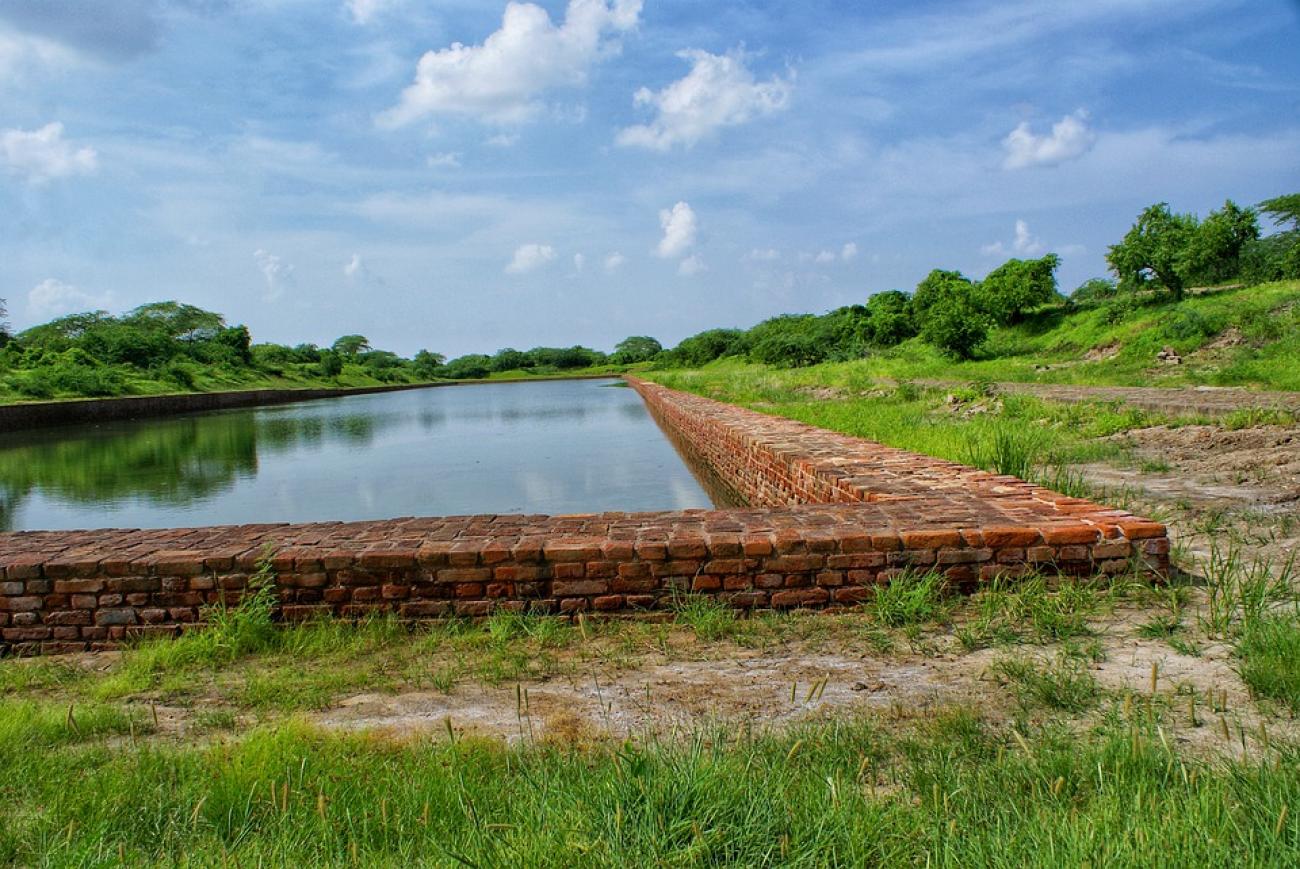
The Indus Valley civilisation - now more commonly known as the Harappan Civilisation - covered parts of India, Pakistan and Afghanistan. When the spectacular site of Mohenjo Daro (which can be visited on our Southern Pakistan trip) went to Pakistan after partition, India was determined to unearth a similarly impressive Indus civilisation site, and this task was assigned to archaeologist R.S. Rao.
After a disappointing excavation in 1953 at the previously known-site of Rangpur delivered little in value, Rao went off in his trusty jeep in search of a better site, and started exploring local villages. Rao would keep broken pieces of clay pot decorated with Harappan-era painting in his pocket to show to villagers and ask whether they had seen any such pieces nearby.
After much searching and a few false starts, Rao’s eureka moment finally arrived in 1954. Stopping to watch a wedding procession pass by, he spotted a mound in the distance. Clutching his examples of Harappan pottery, he asked a local villager if anything like that had been found nearby, to which the villager replied that yes, plenty had.
Despite it being post-monsoon, Rao went off to investigate immediately, walking across farms through knee-deep water for one kilometre. Once atop the mound, a quick spot of digging in the sodden earth revealed clay relics, beads and a stone cutting implement. Rao raised his hands and cried ‘We have got the site.’
Lothal is thought to have been founded in 3,700 BCE, and what is perhaps most interesting is that it has the world’s oldest dockyard - 28 metres long and 37 metres wide, bound on all sides by baked bricks. Whilst the sea is over 19km away today, at the time boats from the Gulf of Cambay could have sailed right up to the city, which was once a thriving trade centre. As well as the dock, a market place and old town have been excavated, with evidence of a bead factory, coppersmiths and blacksmiths and bath houses.
The Golden Man of Kazakhstan
One of the Silk Road’s most extraordinary finds was unearthed by archaeologist Kemal Akishev in 1969 at Issyk Kurgan, an ancient burial mound close to the former capital Almaty.
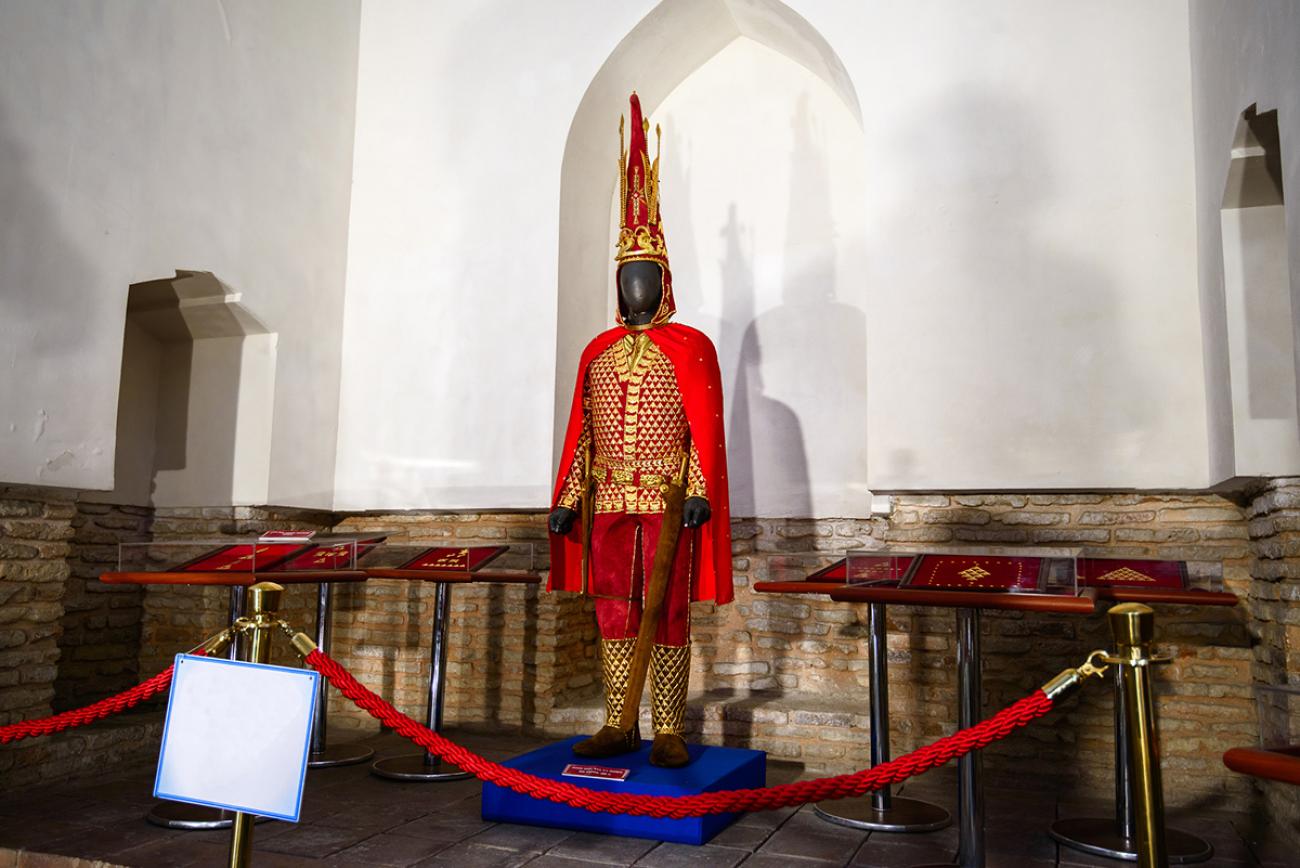
Akishev was conducting excavations in the burial mound, but found to his dismay that the central chamber had been repeatedly plundered in ancient times. Amazingly, he discovered a side chamber 15 metres away which remained completely untouched. Inside was a wealth of unbelievable treasures: the skeleton of an 18-year-old Saka King dressed in intricate gold (hence the Golden Man); a host of funerary and household goods; weaponry including a masterpiece in the form of a gold-plated dagger with 21 beasts depicted upon it; and over 4,000 gleaming gold ornaments.
The Saka (which means ‘mighty men’ in Persian) were a branch of Scythian culture that lived in the eastern Eurasian steppes around the fourth-third century BCE. Many of the ornaments were of an animalistic style, depicting deer, birds, horses and snow leopards, and the discovery has taught historians much about the people of the steppes. Amongst the hoard was a silver cup inscribed in runic writing, one of the oldest written alphabets.
The find caused a sensation in Kazakhstan and the Golden Man is now a national icon - one of the artefacts, a gold ornament of a winged horse, forms part of the national coat of arms, and a sculpture of the golden warrior can be seen in Independence Square in Almaty.
Today a visit to the National Museum in Nur-Sultan offers the chance to see the ornately decorated suit and headdress of the golden man, as well as a huge number of other artefacts found in the tomb.
Sipán
The story of how Sipán, also known as Huaca Rajada, was unearthed is nearly as intriguing as the history and treasures it revealed. A relatively recent find, it came to light in 1987 when Peruvian archaeologist, Dr Walter Alva, grew aware of an increase in exceptional ancient objects floating around the black market.
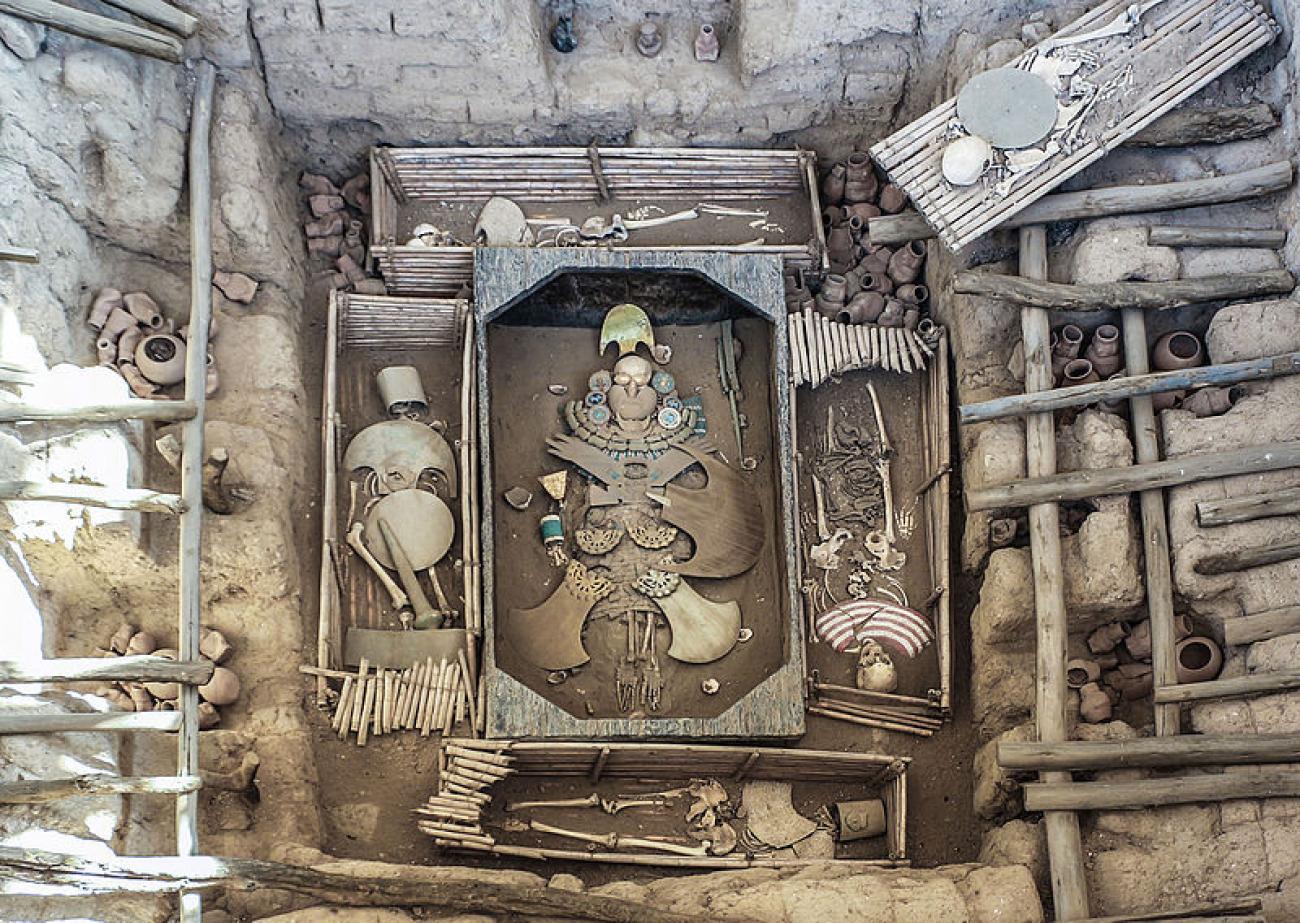
Curious as to their origin, he donned his detective hat and through speaking to people discovered that a series of tombs were being plundered by 'huaqueros', or looters, as well as locals who saw the site as their hoard. With the tombs swiftly secured, a hearts-and-minds campaign targeted the local population who had lost what they considered a source of income, creating jobs including training for those interested in excavation.
The site sits close to the city of Chiclayo in the Lambayeque region of northern Peru and has been attributed to the Moche civilisation which was, at its height, dominant here between 50 to 700 AD.
Although many of the numerous pyramid-like mounds containing the tombs had been plundered and other smaller tombs were found largely intact, the Lord of Sipán tomb was the greatest find. It’s believed to have been the burial chamber for an important Moche leader, who was interred in a highly decorative coffin with a vast array of objects made from gold, ceramic and semi-precious stones like turquoise. He was also accompanied by, among others, his unfortunate wife and a llama.
The majority of the exquisite contents of the Lord of Sipán tomb can be viewed in the Museo Tumbas Reales de Sipán (Royal Tombs of Sipán Museum) in Lambayeque, around an hour’s drive from the main archaeological site.